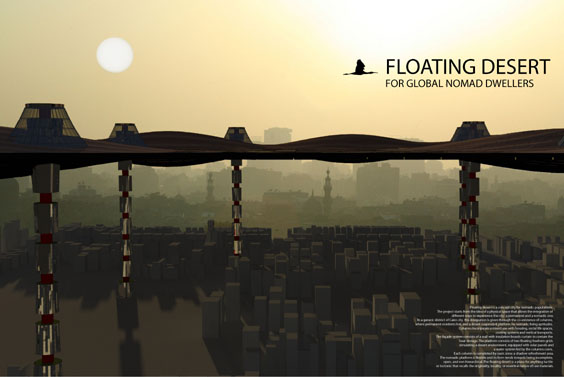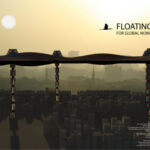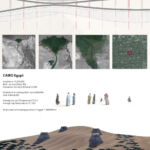Floating Desert: Innovative City for Nomads in Cairo
Project's Summary
The Floating Desert for Global Nomad Dwellers is an ambitious architectural project located in the vibrant city of Cairo, Egypt. As the largest city in Africa and a melting pot of cultures, Cairo serves as the ideal backdrop for this innovative concept that aims to cater to the unique lifestyles of nomadic populations. With a nomad demographic estimated between 500,000 and 1 million, the city recognizes the need to create spaces that honor their rich heritage while providing modern amenities.

At the heart of the Floating Desert concept is the integration of two distinct urban experiences: permanent and nomadic living. The design features a series of columns that house permanent residents alongside a suspended desert platform designed specifically for nomads. This duality not only creates a unique architectural landscape but also fosters a sense of community and interaction between the different inhabitants. The columns are strategically designed to incorporate mixed-use spaces, including housing, social interaction areas, and essential cooling systems, providing a comprehensive living experience.

The innovative façade system employs insulation boards to mitigate the harsh Egyptian climate, while the suspended platform mimics a desert environment, complete with solar panels and water systems powered by the columns. Each column is complemented by an oasis zone, offering shaded areas for relaxation and socializing. This thoughtful design underscores the project’s commitment to sustainability and environmental responsibility, showcasing how architecture can harmonize with nature.
The building system of the Floating Desert consists of three levels, with the 'permanent' city situated on the first level. Here, existing buildings seamlessly integrate with the column structures, creating green spaces and open areas that invite both nomads and permanent residents to engage with their surroundings. The vertical connectivity between the two environments is facilitated by central cores within the columns, allowing easy access to residential, service, and recreational areas.
On the second level, the floating platform offers a flexible living environment tailored to nomadic lifestyles. Oasis areas provide shaded retreats and serve as connectors via vertical lifts to the thriving 'permanent' city below. The energy-efficient design, featuring solar panels nestled within the sand, exemplifies modern sustainable architecture. The translucent membrane structures atop the skyscrapers, constructed from high-strength steel cables and coated with ETFE or polyester, enhance the aesthetic appeal while ensuring durability and functionality. The Floating Desert aims to redefine urban living for nomads, blending tradition with contemporary design.
Read also about the Project Log Building by Projectstroy Drawings project


